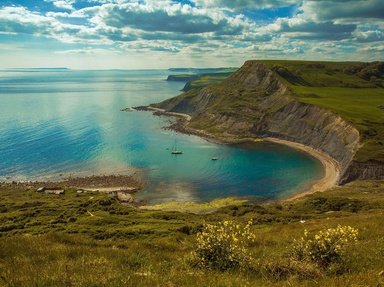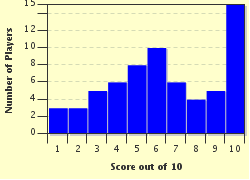Quiz Answer Key and Fun Facts
1. This large crescent shaped bay is still infamous, just as it was in Hardy's day, as a haunt for the smugglers and wreckers who plied their 'trade' here as recently as the last decade of the 18th century. Thomas Hardy called it Deadmans Bay, but by what name is it properly known?
2. This small island located a few miles south of the area that Hardy referred to as South Wessex was, for centuries, only connected to the mainland by the world famous Chesil Beach. We refer to it as Portland; home of the feature known as The Bill, but by what name was it known when portrayed in Hardy's works?
3. This area of poor quality farmland lies, in its greater part, within the modern county of Wiltshire and has for many, many decades provided training facilities for the British Army. Its greatest claim to fame however is as the location of what is probably the world's most famous prehistoric monument. To Hardy it was known as the Great Plain, but what is this area's accepted modern name?
4. The mayor of this Dorset town was the subject of one of Hardy's most popular novels. Hardy called this town Casterbridge; situated eight miles north of Weymouth, by what real name is the county town of Dorset known?
5. The great Victorian tragedy and morality tale, 'Tess of the D'Urbervilles', is set in an area of lush farmland known to Hardy as the Vale of the Great Dairies, but by which of the following names is this area correctly known?
6. The port of Weymouth, or more accurately Melcombe Regis, is renowned as the port through which the Black Death entered the British Isles during the summer of 1348. Weymouth also featured in two of Hardy's novels; by what name was the town of Weymouth known in both of these tales?
7. In ancient times, this city was the capital of Wessex and today is the county town of Hampshire. It was here that Hardy's tragic heroine, Tess Durbeyfield, was imprisoned and then executed for the murder of her rapist from some years previously Alec D'Urberville; Hardy gave this city the name of Wintoncester but what is its real name?
8. The village of Stinsford, a few miles to the east of Dorchester, and the birthplace of Thomas Hardy, was given the Wessex name of Tintinhull.
9. This town, which lies within an area known as the Vale of the White Horse, is notable for being the town in which one of England's 'greatest' kings was born in 849; Thomas Hardy gave this town the Wessex name of Alfredston, but what is this town known as?
10. This huge area of ancient forest, now consisting in great part as sandy heathland was given the Wessex name 'The Great Forest' by Hardy. An air of mystery still surrounds this corner of Wessex; by what name do we know this area, once the hunting estates of many English kings?
Source: Author
SisterSeagull
This quiz was reviewed by FunTrivia editor
spanishliz before going online.
Any errors found in FunTrivia content are routinely corrected through our feedback system.

